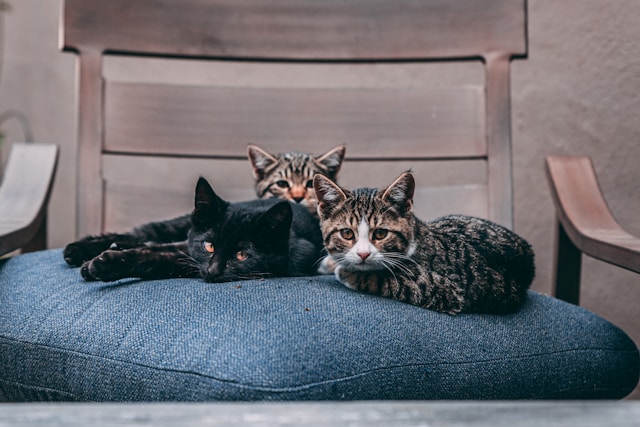Multi-pet households can be full of love, energy, and companionship but they can also present unique challenges. From feeding time to playtime, every day is an opportunity to balance different personalities, needs, and routines. With the right approach, you can create a happy and harmonious home where all your pets thrive.
Plan Before Bringing Home Another Pet
Before adding a new furry (or feathered) friend, take a close look at your current pets’ personalities. A shy, older cat might not appreciate the boundless energy of a young puppy, while an active dog might enjoy a playful companion. Consider species, breeds, and activity levels when making your decision.
Preparing your home ahead of time is essential. Set up a separate area for the new pet with food, water, and bedding. This creates a safe space and reduces stress during the transition.
Proper Introductions
One of the most important tips for living with multiple pets is to introduce them gradually. Start with scent swapping let pets smell each other’s bedding or toys before meeting face-to-face.
When you arrange a first meeting, use a barrier like a baby gate or crate so they can observe each other without direct contact. Keep sessions short and positive, gradually increasing the time as they become more comfortable. Watch for signs of stress, such as growling, hiding, or excessive panting, and slow the process if needed.
Feeding Strategies
Food is a common source of tension in multi-pet households. Separate feeding areas help prevent competition and food aggression. Cats may prefer elevated feeding stations, while dogs should have their bowls spaced apart.
If you have pets with different dietary needs such as a kitten and a senior cat stick to scheduled feeding so you can monitor portions. For free-feeding pets, make sure food is placed in a location only they can access.
Space & Territory Management
Sharing a home doesn’t mean sharing every space. Each pet should have access to their own safe spot whether that’s a bed, perch, crate, or corner of a quiet room. In multi-cat homes, provide at least one litter box per cat plus one extra. For dogs, multiple rest areas reduce competition.
Safe zones also help during moments of tension, giving pets the ability to retreat and relax.
Exercise & Enrichment
One of the best ways to keep pets happy together is to make sure their physical and mental needs are met. Dogs may need long walks, while cats enjoy climbing trees or puzzle feeders.
Rotate toys regularly to keep things interesting. Interactive playtime, such as fetch for dogs or wand toys for cats, strengthens your bond. Some pets enjoy group play, while others need individual attention to prevent jealousy.
Health & Vet Care
When you manage multiple pets, staying on top of health care is crucial. Keep vaccinations, flea prevention, and deworming schedules up to date. If possible, coordinate vet visits to save time, but be mindful of pets who become stressed around each other in carriers or waiting rooms.
Monitor each animal for changes in appetite, behavior, or activity level these can be early signs of illness or stress.
Conflict Prevention & Behavior Management
Tension can develop even in the best-run multi-pet homes. Learn to recognize the early signs of conflict, such as stiff body language, growling, or prolonged staring. Redirect the pets with toys or treats before the situation escalates.
Positive reinforcement training works wonders for encouraging good behavior. If disputes persist, seek help from a trainer or animal behaviorist.
Cleaning & Maintenance
Living with multiple pets means extra fur, dander, and mess. A consistent cleaning routine keeps your home fresh. Vacuum regularly, wash bedding often, and clean litter boxes or cages daily. For odor control, consider air purifiers or pet-safe deodorizers.
Grooming your pets regularly also helps keep the home cleaner and reduces shedding.
Conclusion
Multi-pet households can be incredibly rewarding when managed thoughtfully. By planning introductions, respecting each pet’s space, and staying on top of health and enrichment, you create a balanced environment where your pets can live happily together. With patience, consistency, and understanding, your home can be a place where every pet feels safe, loved, and part of the family.

